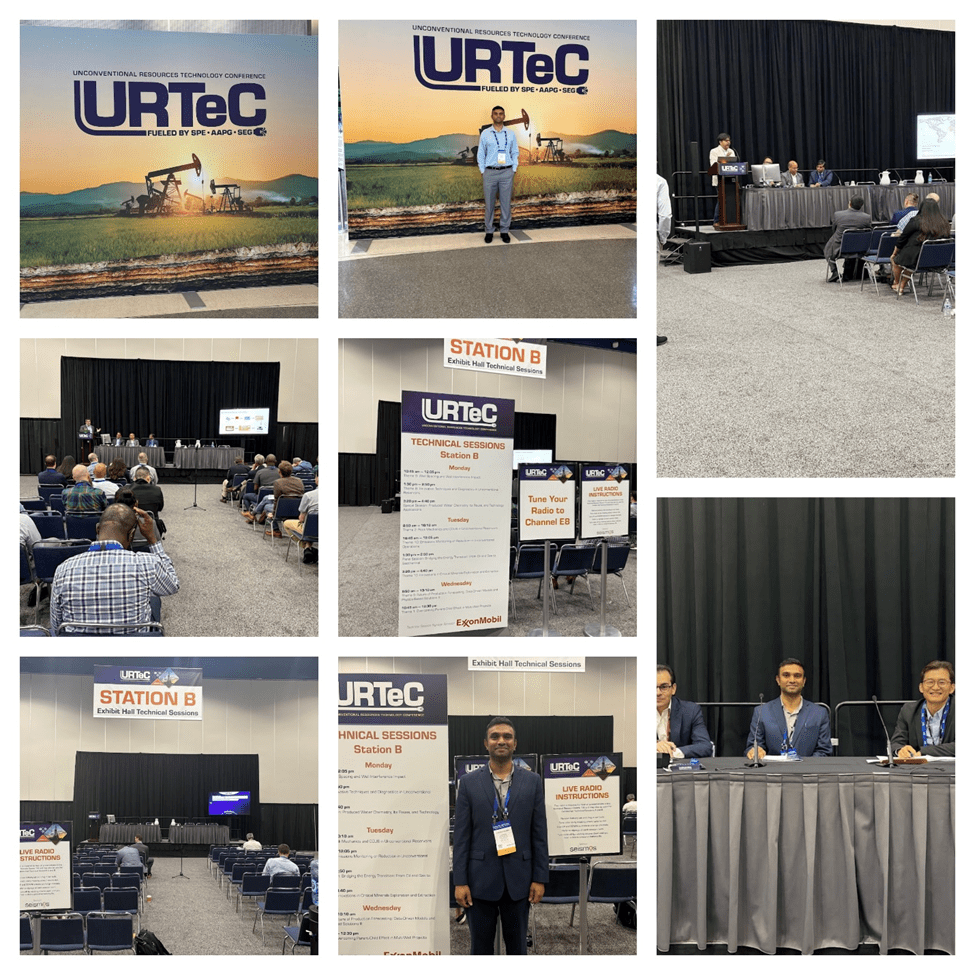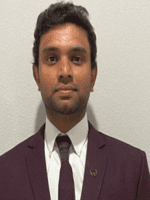Day 1: Technology at the Forefront
The conference opened with a plenary session titled “Shaping the Future: Leveraging Technology Innovation and Championing Sustainable Development in Unconventional Resources.” The panel discussion was particularly engaging, focusing on the transformative impact of emerging technologies. Panelists shared perspectives on advancements in carbon capture and storage (CCS) and the growing role of artificial intelligence (AI) in upstream operations. A key takeaway was that integrating these technologies is essential not just for cost savings and safety improvements, but for unlocking the full potential of unconventional reservoirs and reducing emissions. The conversation underscored a sense of urgency and optimism—an industry ready to meet global energy challenges through technology and innovation.
Following the plenary, I attended Theme 1: Advancing Measurements and Models for Improved Field Development. The first talk introduced next-generation stimulation and recovery technologies. The second presentation covered comprehensive probabilistic pressure prediction for water management in the Permian Basin. The third talk focused on interpreting production inflow profiles from distributed temperature sensing (DTS) data, integrated with completion observations in Argentina’s Vaca Muerta formation. Each session deepened my appreciation for how multidisciplinary approaches are moving the industry forward.
Day 2: A Close-Up on Stimulation and Restimulation
My second day was anchored in Theme 8: Stimulation Aspects of Shale and Tight Reservoirs, held in Exhibition Hall C, Room 1. The morning started with a fascinating case study on the use of spherical micro proppants in shale fracturing in Midland County, Texas, demonstrating both technical challenges and operational results. The next session discussed a DFIT-based (diagnostic fracture injection test) methodology for analyzing long post-frac shut-ins in Vaca Muerta gas wells. The final talk introduced a novel chemical restimulation process that increased hydrocarbon recovery in aging unconventional wells—an area where incremental innovation is making a clear impact.
Later that afternoon, I served as session chair for Theme 2: Developments in NMR Logging, Interpretation, and Core Analysis I. My co-chair introduced the session, and I had the honor of introducing the speaker for the second presentation. Topics included direct measurement of oil/water concentration using advanced NMR techniques and the integrated quantification of immobile and producible fluids from NMR logs and core measurements. The session concluded at 2:50 PM. It was a rewarding experience to guide the discussion and see firsthand the enthusiasm for new measurement technologies.
Day 3: Session Chair – Data-Driven Production Forecasting
On the final day, I arrived early to chair my second session: Theme 9: Future of Production Forecasting—Data-Driven Models and Physics-Based Solutions III. The session began at 8:50 AM, with my co-chair, Dr. Park, introducing the first speaker, who presented on a sequential machine learning framework for well forecasting in the Bakken. The talk offered valuable insights into machine learning model development and validation for well performance prediction. I introduced the second speaker, who spoke on the topic of well pacing and dimensionality in forecasting workflows. The session concluded at 9:45 AM. Serving as chair was a tremendous learning experience, as I engaged with presenters and attendees passionate about innovation and emerging technologies.
Conclusion
Participating in URTeC 2025 was a highlight of my professional year. As both reviewer and session chair, I witnessed firsthand how our industry is tackling complex challenges with creativity and rigor. The technical sessions not only broadened my understanding of cutting-edge practices but also inspired me to further contribute to the energy community. I look forward to seeing how these innovations will shape the industry’s path forward.
Purushothkumar Santhana Mahalingam is an accomplished petroleum engineer with extensive expertise in hydraulic fracturing, well stimulation, and petroleum engineering management. He began his career in the oil and gas industry as a Field Engineer focused on hydraulic fracturing. Subsequently, he transitioned to Procurement Engineer, responsible for procuring essential materials such as proppants, acids, and well stimulation chemicals for fracturing operations and managing district inventory. His responsibilities also include vendor negotiations and writing technical proposals.
Mahalingam has been a member of the Society of Petroleum Engineers since 2011. He has actively participated in key industry conferences, serving as a technical reviewer for URTeC 2025, and is slated to serve as a session chair at the same conference. He was also a speaker for the SPE North American Student Symposium in February 2025 and a Judge in the 2025 North America Regional Petrobowl Competition.
He earned a Master’s in Natural Gas Engineering from Texas A&M University—Kingsville and a Bachelor's Degree in Petrochemical Technology from Anna University, Tiruchirappalli. To further enhance his credentials, he completed a Postgraduate program in Data Science and Business Analytics from the University of Texas at Austin. He gained proficiency in industry-relevant software such as FRACPRO, Meyers, Aspen HYSYS, and PROMAX.







